Extraordinary and Bizarre World of Kami: An Overview of Deities in Japanese Mythology
 Let's Explore Kami - Japanese Gods and Goddesses
Let's Explore Kami - Japanese Gods and Goddesses
Let us delve into a world where the ordinary and extraordinary intertwine in a fascinating weave of mythology and belief. This is the world of kami - mysterious, sometimes strange, and often dark spirits and deities that have shaped Japanese culture and religion for centuries. Many of them we have seen, in various forms, in manga and anime, Japanese films, and other works of art. Kami - let's take a closer look.

Who or What are Kami?


Each kami has its unique identity and character. Some are powerful deities of nature, like Amaterasu, the sun goddess, who is one of the most revered figures in Shintoism. Others are guardians and protectors of people, places, and even whole communities. 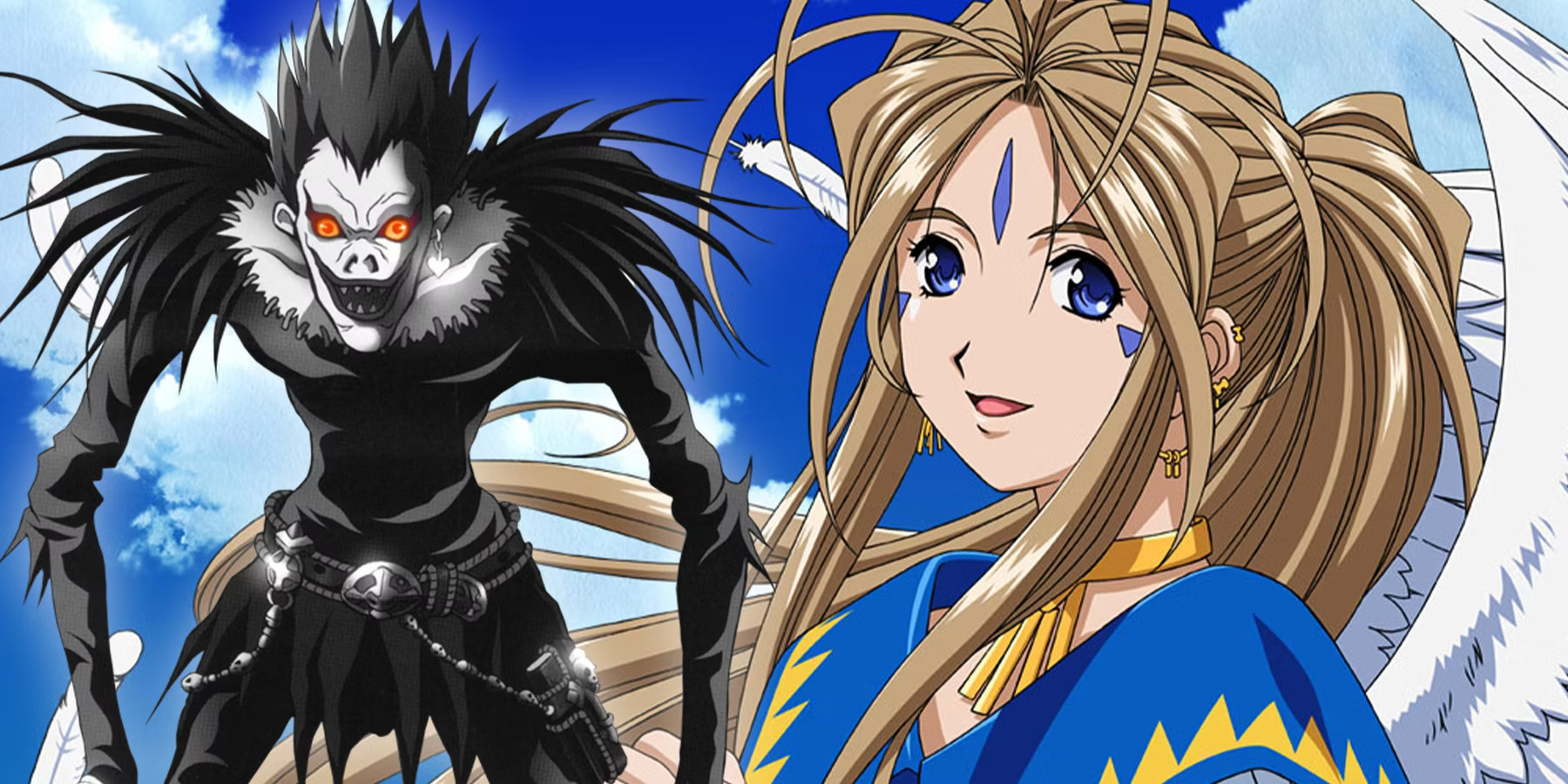
In Shintoism, there is no boundary between the sacred and the profane. Kami are a part of everyday life, speaking to the faithful through nature, dreams, and even through signs and symbols. It is a living faith, flexible, allowing for multiple interpretations and personal experiences, making Shintoism intimately close to the heart of Japanese culture and identity.
The Most Important and Best-Known Kami
Amaterasu - Goddess of the Sun

One of the most famous stories about Amaterasu tells of her hiding in a cave, causing the world to plunge into darkness. This event occurred after a quarrel with her brother, Susanoo. The world without her light became a gloomy and dark place until other gods managed to persuade her to come out, restoring light to the earth.
Amaterasu appears in many works of pop culture. For example, in the video game "Okami", the main character is an incarnation of Amaterasu in the form of a wolf. In this game, the goddess regains her powers to restore light and life to a world plunged into darkness.
Susanoo - God of Storms and Seas
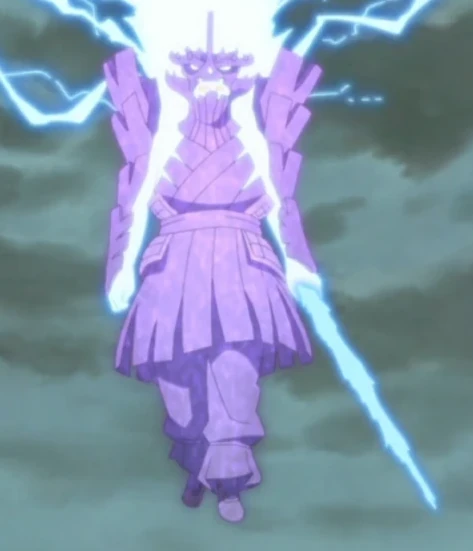
In one of the most epic and well-known Shinto stories, Susanoo, the kami of storms and seas, becomes a hero through his dramatic encounter with Yamata-no-Orochi, a terrifying, multi-headed dragon whose breath brought death and destruction. The dragon terrorized the land, demanding annual offerings in the form of young girls. When it was Kushinada-hime's turn, the daughter of an earthly deity, Susanoo decided to intervene. He transformed Kushinada-hime into a comb to hide her and then cunningly intoxicated the dragon, using eight barrels of sake placed at each of its eight heads. When Orochi fell into a drunken slumber, Susanoo decisively struck the dragon with his sword, freeing the land from its tyranny. From the body of the defeated Orochi, Susanoo extracted numerous treasures, including the famous sword Kusanagi-no-Tsurugi, which became one of the three Imperial Regalia of Japan. This story symbolizes not only Susanoo's courage and strength but also his unpredictable and wild character, highlighting his role as a protector, but also as a figure whose intentions are not always clear and can lead to unexpected consequences.
Susanoo is a popular character in manga and anime, such as "Naruto", where he is one of the powerful spirits summoned by some of the characters. He represents both strength and untamed nature.
Tsukuyomi - God of the Moon
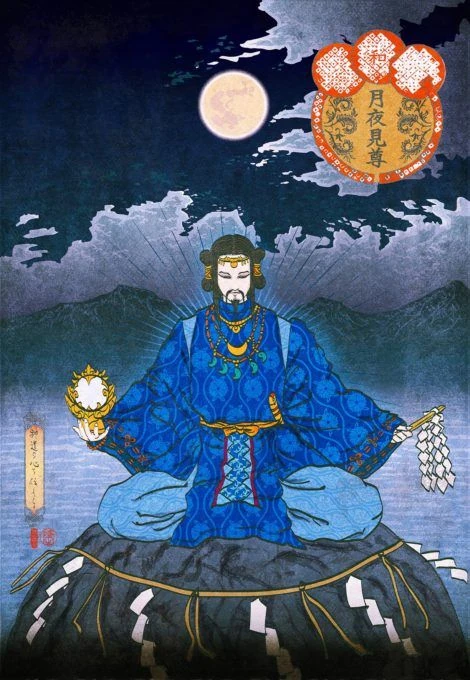
In one of the darker and more intriguing Shinto legends, Tsukuyomi, the kami of the moon, becomes the central figure in a dramatic conflict that reveals his harsh and relentless nature. The story describes a dinner he was invited to by the goddess of food, Uke Mochi. During the feast, the goddess created food in an unusual manner that disgusted Tsukuyomi - she spat out rice, fish emerged from her nose, and game from her rear. Outraged and disgusted by these methods, Tsukuyomi, in an act of anger, killed Uke Mochi. His drastic action caused a deep rift with his sister, Amaterasu, the sun goddess, who was horrified by his brutality. This act of violence not only reflects the conflict between order and chaos but also illustrates Tsukuyomi's distance from the warmth and life-giving energy of Amaterasu, emphasizing his connection to the darker, more mysterious aspects of the night and moon. This event sheds light on the unyielding and harsh side of Tsukuyomi, who, though less dynamic than Susanoo, possesses equally powerful and significant might in Japanese mythology.
Tsukuyomi appears in various forms in pop culture, though he is less present than Amaterasu or Susanoo. For example, in the "Persona" video game series, Tsukuyomi is one of the personas summoned, symbolizing the power and mystery of the night.
Lesser-Known but Fascinating Kami
Inari - Kami of Fertility, Rice, and Foxes
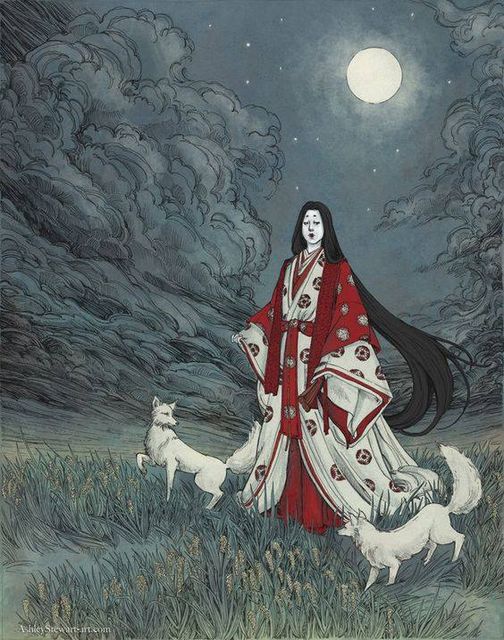
One of the most captivating legends related to Inari tells of transforming a poor man into a wealthy farmer through divine intervention. In this story, Inari noticed a man who, despite life hardships and limited resources, demonstrated unwavering diligence and humility. Wanting to reward his hard work and pure heart, Inari bestowed upon him magical rice seeds that grew with unprecedented speed and abundance. These extraordinary seeds not only provided him with material prosperity but also became a symbol of hope and the possibility of transforming life through the blessings and care of kami. This story emphasizes not only Inari's role as a benefactor of prosperity and fertility but also portrays kami as bestowing grace upon those who persevere in their endeavors and maintain a good heart despite life's challenges. This tale has become an inspiration to many, reminding us that in the Shinto world, deities are close to people, supporting them in their daily struggles and offering help to those who need it most.
Inari is a popular figure in pop culture, often appearing in manga and anime, such as "Inari, Konkon, Koi Iroha," where kami and their fox messengers play a central role. In video games, like "Smite," Inari is portrayed as a powerful character, with magical abilities reflecting their connection to nature and fertility.
Ebisu - Kami of Fishermen and Commerce
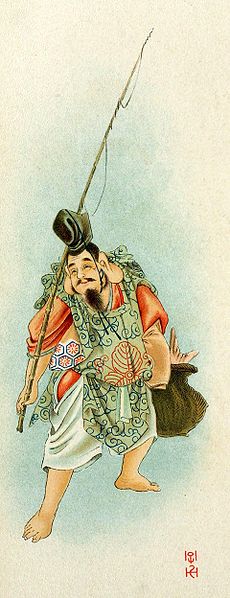
One of the most insightful stories about Ebisu begins at the moment of his birth when, deemed unfortunate, he was rejected by his parents, Izanami and Izanagi, and cast into the sea. Instead of perishing, Ebisu transformed into a kami, gaining power over the seas and becoming the guardian of fishermen and traders. This story symbolizes the extraordinary transformation from a rejected child into one of the most beloved and revered kami. His ability to overcome adversities and find his strength and identity in the depths of the sea is an inspiration to many. Every year, especially during the Ebisuko festival, people throughout Japan celebrate Ebisu, asking for his blessings in their business endeavors and bountiful catches. This tradition not only pays tribute to Ebisu but also reminds us of the power of perseverance and the ability to find one's path even in the most challenging circumstances, which is a key element of his legend and cult.
Ebisu appears in various works of pop culture. For instance, in the "Final Fantasy" game series, Ebisu is often portrayed as a character associated with the sea and fishing, symbolizing prosperity. In manga and anime, such as "Durarara!!," he is portrayed as a benevolent spirit, bringing luck and prosperity.
Izanami and Izanagi - Creators of the World

In one of the most emotional and symbolic Shinto legends, the dramatic tale of Izanami and Izanagi sheds light on the Shinto perception of life, death, and love. After Izanami died during childbirth, her beloved Izanagi, unable to come to terms with her loss, ventured into Yomi, the dark realm of the dead, to retrieve her. However, upon arrival, he discovered that Izanami had forever become a part of that gloomy world. In an act of despair, he tried to extract her from the realm of shadows, but Izanami, now bound to the realm of death, could not return to the world of the living. This poignant story, full of tragedy and unfulfilled love, emphasizes not only the inevitability of death and the irreversibility of transformation but also illustrates the deep bond between life and death in Shintoism. This tale, expressing both the human desire for permanence and the acceptance of the inevitable end, remains one of the most moving and significant myths in Japanese culture, reflecting the complexity and beauty of human existence.
The characters of Izanami and Izanagi appear in many works of pop culture, primarily in video games and anime. For example, in the "Persona" game series, Izanami and Izanagi are important personas. In anime, such as "Kamisama Kiss," they are portrayed as powerful and mysterious figures shaping the fates of the characters.
Dark and Cruel Kami
Yuki-onna - The Spirit of Winter

One of the most famous legends tells of two travelers who took shelter in a hut during a snowstorm. At night, Yuki-onna appeared before them, turning one of the men into ice with her frosty breath, while sparing the other's life on the condition that he never tells anyone what he saw. This man later married and had children, and after many years, he confessed his secret to his wife. It turned out that his wife was Yuki-onna herself, who then disappeared, leaving behind only white snowdrifts. This story portrays Yuki-onna as a mysterious, dangerous figure, yet one capable of human feelings.
Yuki-onna is a popular motif in Japanese art, literature, and pop culture. She appears in many manga and anime, often as a tragic or terrifying character. For example, in the anime "Mushishi," Yuki-onna appears as a mysterious character influencing the fates of the main characters. In films and literature, she is often depicted as a creature with two faces - beautiful yet deadly.
Raijin and Fujin - Gods of Lightning and Wind
Raijin and Fujin are brothers in Japanese mythology, responsible for weather phenomena. Raijin, known as the god of thunder, storms, and lightning, is often depicted with drums, which he beats to create thunder. Fujin, the god of wind, is portrayed with a bag full of winds that he releases, creating gales and storms.
Raijin and Fujin, kami of storms and wind, play a crucial role in one of the dramatic legends of Japanese mythology, where they defend the heavenly kingdom from an invader from another world. When invisible forces of evil threatened the realm of the gods, Raijin, the kami of thunder, and Fujin, the kami of wind, were called to battle. Raijin, with his storm drums strapped to his waist, summoned violent storms, striking with a fury that shook the heavens. His mighty thunders echoed throughout the world, and bright lightning cut through the darkness, instilling terror in the hearts of their enemies. Meanwhile, Fujin unfurled his magical bag of winds, unleashing fierce gales that swept away and scattered the armies of invaders, creating chaos and confusion in their ranks. Their joint attack, a combination of the power of thunder and untamed winds, created an unparalleled force that not only repelled the threat but also united the gods in their common cause. This story shows Raijin and Fujin not only as powerful guardians of the heavens but also as symbols of strength and determination in the face of danger, and their legendary deeds are reminders of the power and influence of the natural forces of the world.
Both figures often appear in art, especially in traditional ukiyo-e woodblock prints. They are also popular motifs in manga, anime, and video games. For example, in the "Final Fantasy" game series, Raijin and Fujin appear as side characters with unique abilities related to weather. Also, images of these kami, often placed on the gates of temples, are believed to ward off evil spirits and protect from misfortunes.
Amatsu-Mikaboshi - Kami of Chaos and Evil

In one mythological tale, Amatsu-Mikaboshi plays a key role as an adversary to the Shinto gods, representing the primal darkness and chaos that existed before the creation of the world. In the myths, he is described as an entity capable of absorbing light and order, and his conflict with the Shinto kami symbolizes the eternal struggle between order and chaos. In one story, Amatsu-Mikaboshi uses his influence to incite discord among the gods, leading to great battles and destruction. His power is so immense that even other gods fear his strength and unpredictability.
Though Amatsu-Mikaboshi is not as widely known in popular Japanese culture as other kami, it appears in some contemporary works related to Japanese mythology. For example, in some video games and manga, it appears as a powerful, dark figure, often being a main antagonist or a formidable opponent. Its character is used to represent universal themes of conflict between good and evil, order and chaos, emphasizing its role as the personification of primal darkness and evil.
Kami of Laughter, Fun, and Mischief
 Sarutahiko – The Phallic Deity of Fertility
Sarutahiko – The Phallic Deity of Fertility
Sarutahiko, known in Japanese mythology as the kami of humor and minor mischief, is a figure that brings smiles and entertainment. Often depicted as a prankster with an unusual appearance, characterized by a long nose and eccentric demeanor, he is a symbol of fun and innocent jokes. His presence is a reminder that there is a place for joy and lightness in life.
In one of the colorful legends, Sarutahiko, the kami of humor and unexpected twists, took on the task of leading the gods from heaven to Earth. However, his methods were far from conventional, imbued with roguish humor that amused both other kami and humans. Instead of following a standard, straight path, Sarutahiko chose the most winding and unpredictable route, full of surprises and playful tricks. Dancing and jumping, he led the gods through forests, over streams, and through dense mists, seizing every opportunity to surprise his companions with unexpected jokes and pranks. At one point, for example, he turned stones on the path into jumping frogs, causing astonishment and laughter among the following gods. In another instance, when the gods expected him to cross a river by a bridge, Sarutahiko chose to fly on the back of a giant fish, adding a touch of magic and an unexpected turn of events. This story portrays Sarutahiko as a kami who approaches life with humor, reminding us that it's not always necessary to stick to the beaten path, and life is full of humor, joy, and unexpected, though sometimes surprising, paths.
Sarutahiko often appears in Japanese theatrical arts, such as kabuki and noh, where he is depicted as a comedic character, bringing relief and entertainment. In modern media, such as anime and manga, his character is used to introduce a light tone and humorous relief in stories. He is a figure that reminds us that even in the most challenging moments, it's important to maintain a sense of humor.
Okuninushi - Kami of Love and Playfulness
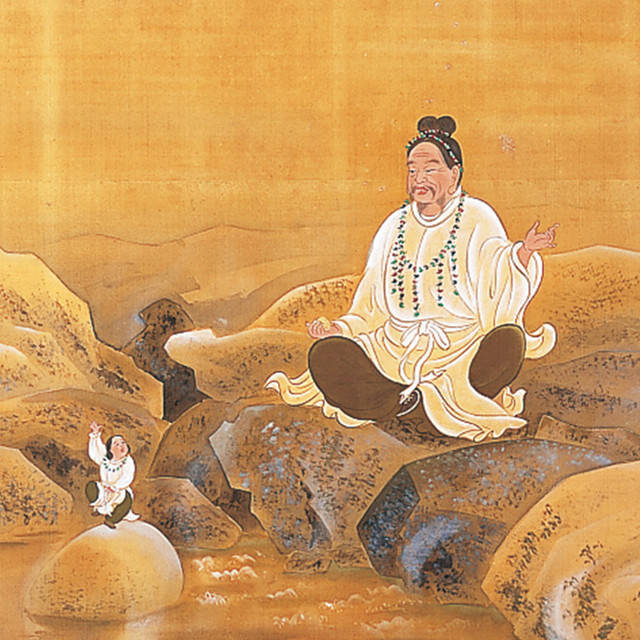
In one of the vibrant tales, Okuninushi, the kami of love and mischief, undertook the challenge of winning the heart of a beautiful princess, leading to a series of comical and complex challenges set by her clever siblings. Each challenge was more absurd and difficult than the last - from catching a fish that spoke with a human voice, to finding an invisible string of a harp, to racing the moon. Okuninushi, equipped with his characteristic wit and a bit of magical help from favorably inclined lesser spirits, tackled these tasks in both a brilliant and humorous manner. For instance, using a magical mirror, he made the fish speak, and for the race with the moon, he used its reflection in the water, making it seem as though he was faster than the celestial satellite. His creativity and sense of humor not only amused the princess but also brought him closer to her heart. Each challenge, though seemingly impossible to overcome, turned into another opportunity to demonstrate his dexterity and wit. This story portrays Okuninushi as a kami who teaches that love can be full of joy and amusing adventures, and obstacles on the way to a beloved's heart can be an opportunity to demonstrate creativity and humor.
Okuninushi is a popular character in Japanese art and literature, where his love adventures often serve as a source of humor and entertainment. In modern media, such as manga and anime, he is often depicted as a roguish but charming hero, whose mischief adds lightness and fun to stories. He is a symbol that in love there is room for laughter and happiness, and his tales are a reminder that in life, it is sometimes worth approaching things with a wink.
Binbogami - Kami of Misfortune and Unfortunate Events

In one of the humorous and ironic tales, Binbogami, the kami of misfortune and unfortunate events, decided to afflict a certain merchant with a series of unfortunate events, which, however, each time unexpectedly turned to his advantage in the most unexpected ways. The first of these occurred when Binbogami magically caused the merchant's cart to overturn, scattering the goods. However, at the place where the goods were scattered, the merchant discovered hidden treasure. Another attempt by Binbogami involved sending a storm that was supposed to destroy the merchant's shop. Instead, the rain revealed an ancient well in the merchant's garden, which became a local tourist attraction. In yet another case, Binbogami tried to spoil the merchant's transaction with a foreign business partner, but instead, he caused a misunderstanding that led to the doubling of the merchant's profits. Each of Binbogami's attempts, instead of bringing misfortune, transformed into another fortunate event, making the merchant one of the richest and happiest people in the region. This story portrays Binbogami as a kami who, despite trying to create turmoil, inadvertently becomes a source of happiness and prosperity, reminding us that life can be full of surprises, and even the worst luck can have an unexpectedly happy ending.
Binbogami appears in Japanese culture as a comic character, bringing humor to stories and performances. In art, literature, and modern media, such as manga and anime, he is often used to create funny situations and a light atmosphere. This kami character is a reminder that even in difficult moments, one can find a reason to laugh, and luck and misfortune are part of human life, creating a rich tapestry of experiences.
Kami Today
The Theme of Kami in Manga and Anime

The Presence of Kami in Video Games
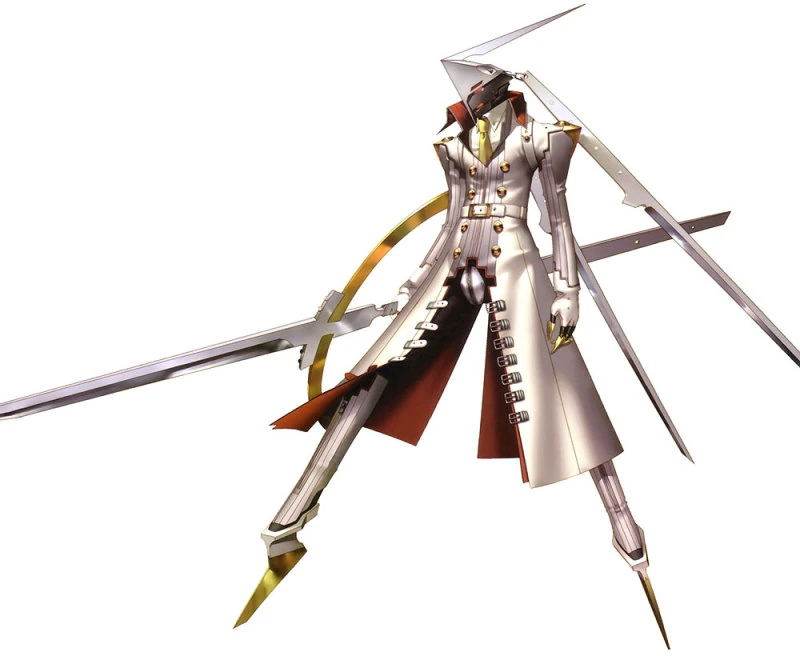
The Impact of Kami on Contemporary Japanese Culture
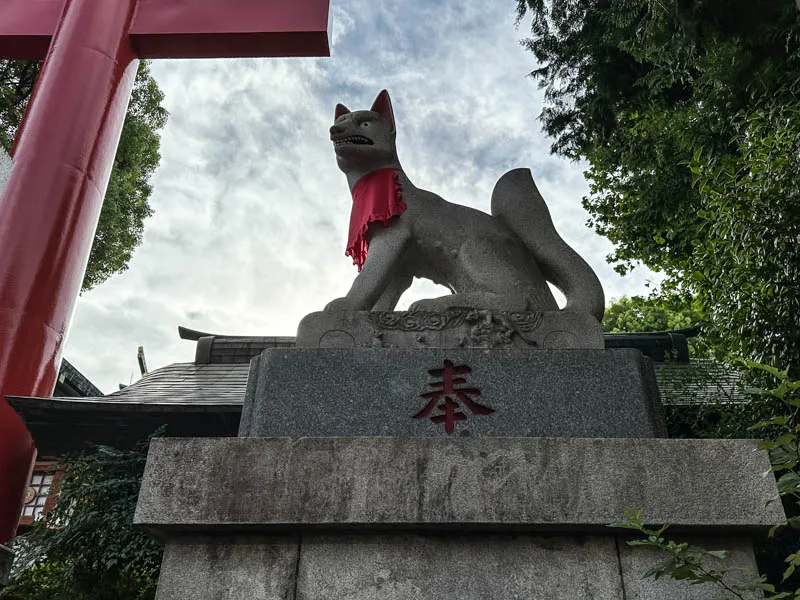
Ancient Kami in Modern Japan
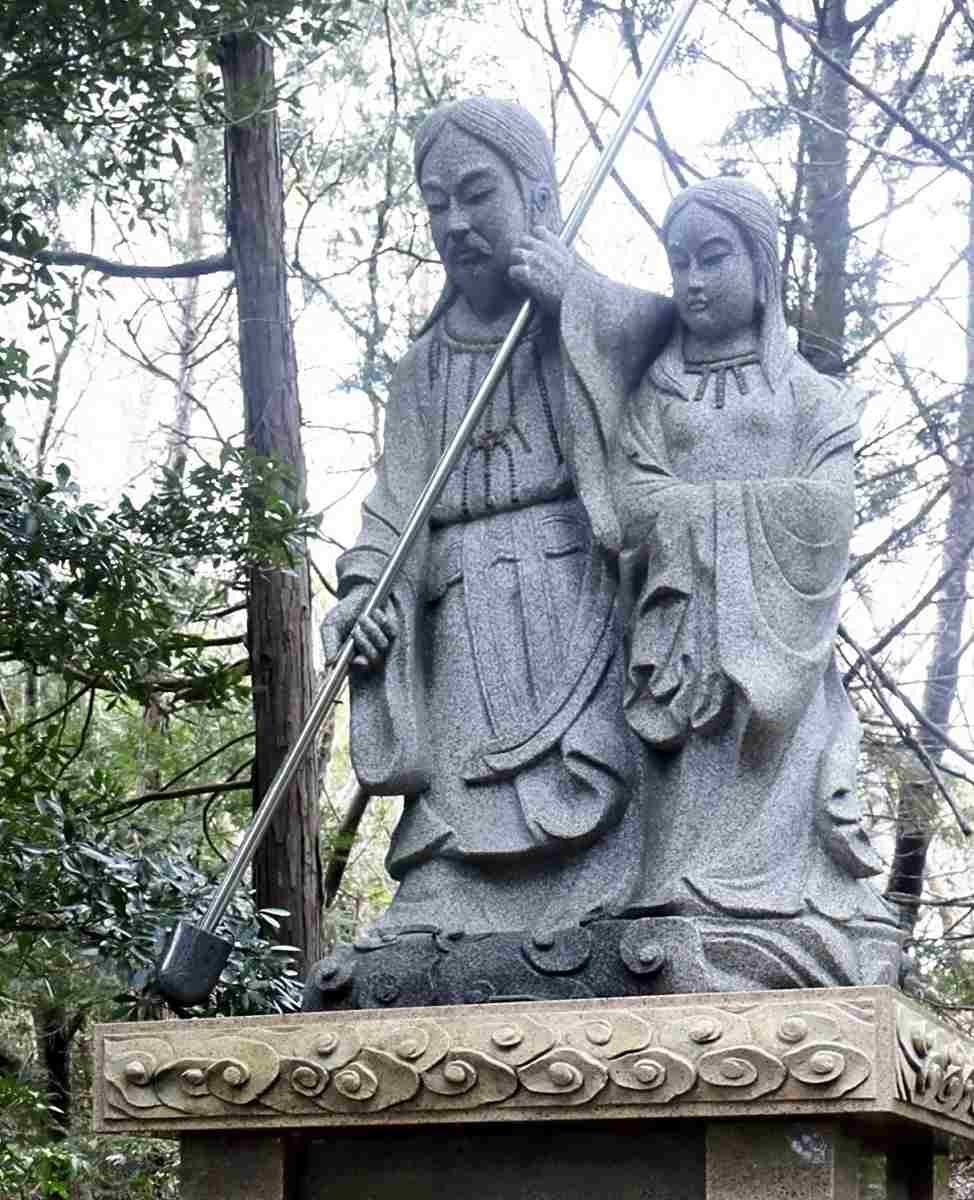
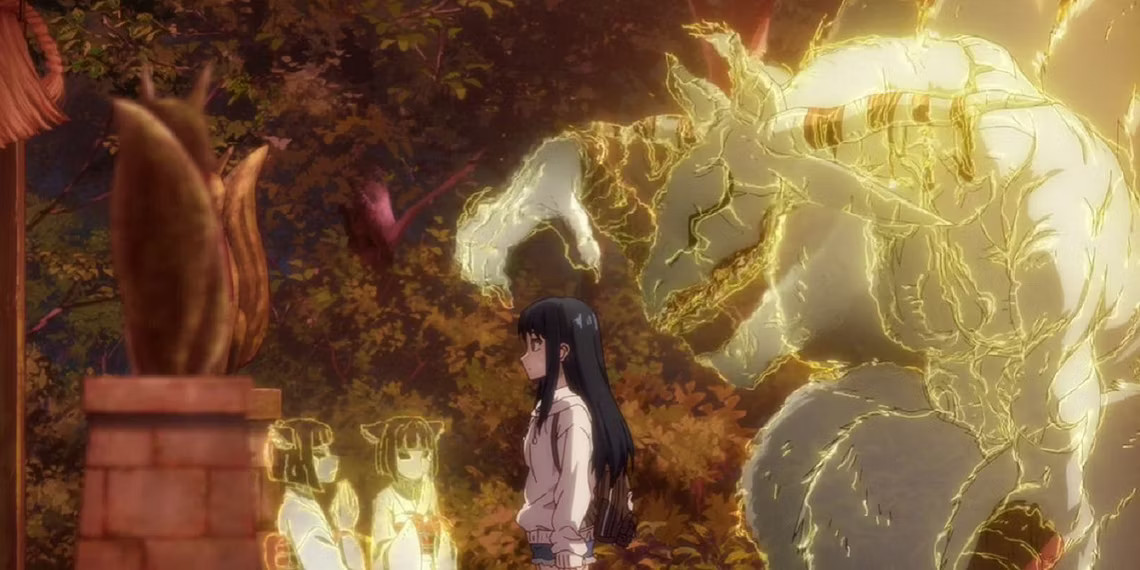
>>SEE ALSO SIMILAR ARTICLES:
Shintoism at the Heart of Manga and Anime: The Profound Mark of Tradition in Japanese Pop Culture
Kojiki & Nihon Shoki: Ancient Tales in Contemporary Echoes
Kami, islands, chaos and ocean: World Creation Vision in Japanese Mythology
Archipelago of Gods: Mythological Origins of Japanese Islands
"Strong Japanese Women"
see book by the author
of the page
未開 ソビエライ
An enthusiast of Asian culture with a deep appreciation for the diverse philosophies of the world. By education, a psychologist and philologist specializing in Korean studies. At heart, a programmer (primarily for Android) and a passionate technology enthusiast, as well as a practitioner of Zen and mono no aware. In moments of tranquility, adheres to a disciplined lifestyle, firmly believing that perseverance, continuous personal growth, and dedication to one's passions are the wisest paths in life. Author of the book "Strong Women of Japan" (>>see more)
Personal motto:
"The most powerful force in the universe is compound interest." - Albert Einstein (probably)
Mike Soray
(aka Michał Sobieraj)
未開 ソビエライ
An enthusiast of Asian culture with a deep appreciation for the diverse philosophies of the world. By education, a psychologist and philologist specializing in Korean studies. At heart, a programmer (primarily for Android) and a passionate technology enthusiast, as well as a practitioner of Zen and mono no aware. In moments of tranquility, adheres to a disciplined lifestyle, firmly believing that perseverance, continuous personal growth, and dedication to one's passions are the wisest paths in life. Author of the book "Strong Women of Japan" (>>see more)
Personal motto:
"The most powerful force in the universe is compound interest." - Albert Einstein (probably)
Mike Soray
(aka Michał Sobieraj)
Write us...
Ciechanów, Polska
dr.imyon@gmail.com
___________________
inari.smart
Would you like to share your thoughts or feedback about our website or app? Leave us a message, and we’ll get back to you quickly. We value your perspective!
 Let's Explore Kami - Japanese Gods and Goddesses
Let's Explore Kami - Japanese Gods and Goddesses
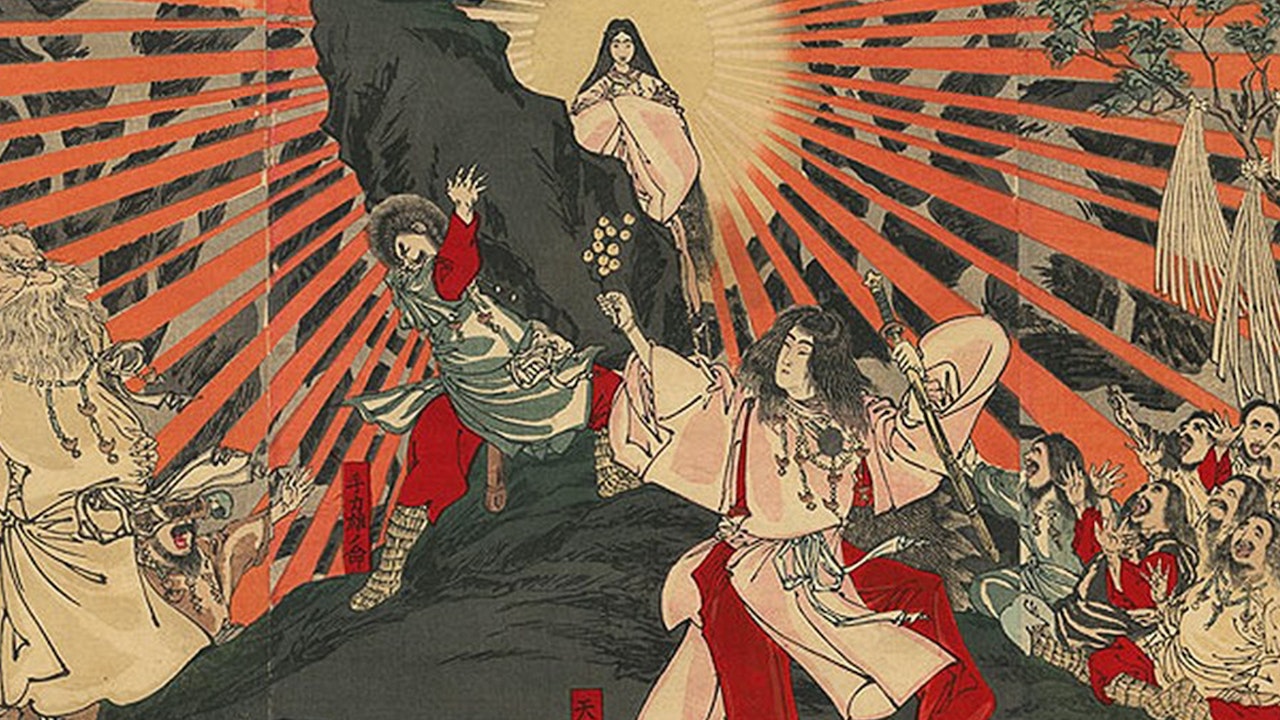






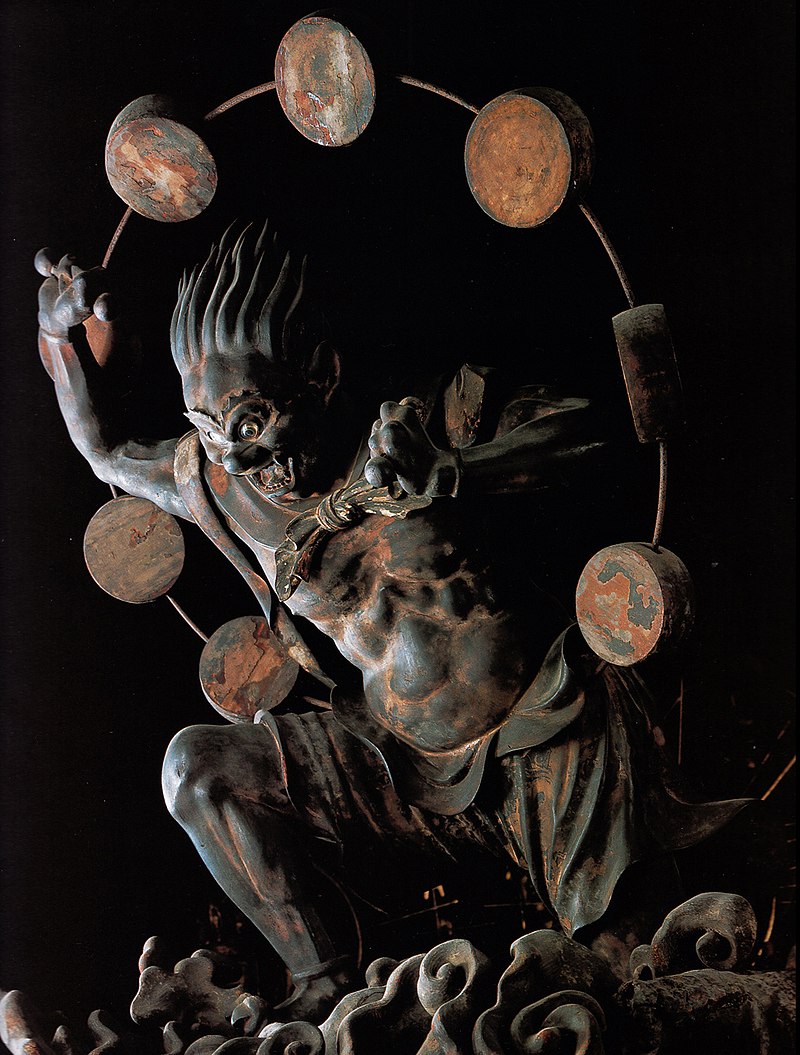


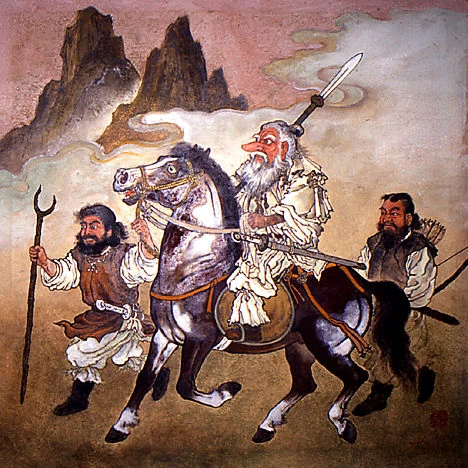 Sarutahiko – The Phallic Deity of Fertility
Sarutahiko – The Phallic Deity of Fertility




